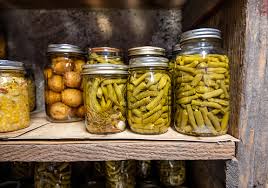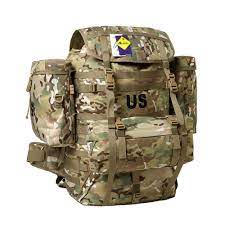Prepping 101
Preparing for an emergency or disaster can be overwhelming, but it’s important to have a plan in place to keep you and your loved ones safe. The following tips can help you start prepping for any situation:
1. Start with a plan – create a family emergency plan that includes evacuation routes, a communication strategy, and a designated meeting place.
2. Stock up on supplies – have enough food, water, and toiletries for at least three days, and consider investing in a generator or alternative power supply.
3. Know your risks – research the natural disasters and emergency situations that are most likely to occur in your area, such as floods or wildfires.
4. Keep important documents safe – keep documents such as birth certificates, passports, and insurance policies in a waterproof, fireproof safe or location.
5. Regularly update your supplies – regularly check expiration dates on food and medicine, and update your emergency kit as needed.
Remember, taking the time to prep can make a huge difference in how you and your family are able to handle an emergency. Start small and work your way up as you become more confident in your prepping abilities.
Why Prepare for Disasters and Emergencies?
Preparing for a disaster is one of the most important things that you can do for yourself and your loved ones. Disasters can strike at any time, and they can be devastating. Whether it’s an earthquake, hurricane, or wildfire, being prepared can mean the difference between life and death.
There are many reasons why you should prep for a disaster. First and foremost, it can help ensure that you and your family are safe. You’ll have the supplies, tools, and knowledge that you need to handle whatever comes your way. This can include things like food and water, shelter, first aid kits, and communication devices.
Secondly, prepping can help you feel more in control during an emergency. When disaster strikes, it’s easy to feel overwhelmed and scared. But if you’ve prepared in advance, you’ll have a plan to follow, and you’ll know what to do. This can help you stay calm and make better decisions.
Finally, prepping can help you recover more quickly after a disaster. Even if you’re not directly affected, the ripple effects of a disaster can be felt for years. By having a plan in place, you’ll be able to get back on your feet more quickly and help others in your community.
In conclusion, prepping for a disaster is a smart and responsible thing to do. It can help keep you and your loved ones safe, give you a sense of control, and help you recover more quickly. So take the time to prepare, and be ready for whatever comes your way.
The 3 Main Categories of Disasters and Emergencies
Disasters come in many shapes and sizes, but can generally be categorized into three main types: natural disasters, man-made disasters, and technological disasters.
Natural disasters are events that are caused by natural phenomena, such as earthquakes, hurricanes, floods, droughts, and wildfires. These events can cause significant damage to infrastructure, homes, and personal property. Proper preparedness can help mitigate the effects of these events, and can include building structures to withstand potential damage or having an emergency response plan in place.
Man-made disasters are events that are caused by human error or intent, such as terrorism, fires, transportation accidents, or industrial accidents. Proper preparation can include measures such as workplace safety protocols and evacuation plans.
Technological disasters are events that are caused by a failure in technology, such as a power outage or a cyber attack. This type of disaster can have significant effects on daily life, as many systems rely on technology to function. Understanding the potential for these events and implementing backup systems can help lessen the impact of technological disasters.
No matter the type of disaster, it is important to be informed and prepared in order to help protect lives and minimize damages. By understanding the distinctions between different types of disasters, we can take appropriate steps to prepare ourselves and our communities.
Food Storage
 Food storage is an essential task for all households. Whether it is for a natural disaster or any other emergency situation, having enough food to sustain you and your family is critical. In this blog post, we will discuss some essential tips for food storage during an emergency.
Food storage is an essential task for all households. Whether it is for a natural disaster or any other emergency situation, having enough food to sustain you and your family is critical. In this blog post, we will discuss some essential tips for food storage during an emergency.
The first step is to create a food storage plan. This means deciding on the type of food you want to store and how much you need. It is also essential to consider dietary restrictions and preferences within your household. Canned fruits and vegetables, dry beans, and grains are some popular choices for food storage. Make sure to purchase food items with a long shelf life.
Storing your food safely is equally important. Choose a cool, dry, and dark place to store your food items. Ensure that your food storage space is clean and away from any pests or rodents. It is also essential to rotate your food items to prevent spoilage or expiration.
Finally, it is crucial to regularly check and maintain your food storage. Make sure to monitor the shelf life of your food items and replace any items close to expiration.
In conclusion, creating a food storage plan, storing your food safely, and regularly maintaining your food storage can help you and your family be better prepared for an emergency situation. Stay safe and prepared!
Survival Bags
 A survival bag, also known as a bug-out bag or go-bag, is a key item in any emergency preparedness plan. It’s a bag filled with essential survival items that can help you stay safe and comfortable in case of a disaster or emergency.
A survival bag, also known as a bug-out bag or go-bag, is a key item in any emergency preparedness plan. It’s a bag filled with essential survival items that can help you stay safe and comfortable in case of a disaster or emergency.
Firstly, choose a sturdy, waterproof bag that is easy to carry. The next step is to create a checklist of essential items including a first aid kit, water filtration system, non-perishable food, and a multi-tool. The bag should also include extra clothing, a flashlight, and a whistle for signaling for help.
It’s important to regularly check and update the bag as items may expire or become damaged over time. Make sure to include any necessary medications and important documents, such as identification and insurance information.
In conclusion, a survival bag is an essential item for any emergency preparedness plan. By being prepared, you can ensure your safety and well-being in case of a disaster or emergency situation.

